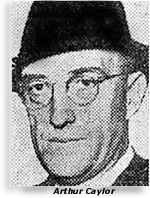 When the full story of the Japanese hejira comes out, the Army and associate agencies of the Wartime Civil Control Administration probably will get a gadget of some sort— for distinguished service. For winning a battle seems a very simple process in comparison to the task of moving a segment of population with so little dislocation.
When the full story of the Japanese hejira comes out, the Army and associate agencies of the Wartime Civil Control Administration probably will get a gadget of some sort— for distinguished service. For winning a battle seems a very simple process in comparison to the task of moving a segment of population with so little dislocation.
What most people don’t know—not even the affected Japanese— Plan No. 1 provided for an instant evacuation by truck, wheelbarrow, train and foot. The idea was to use it only in the event of a super-emergency. While uninformed patriots were yelling for action, and getting together to pass resolutions, the Army was all set. It’s set today—should a super-emergency arise. You needn’t worry about the Army being caught napping on this one.
But it much prefers, my agents learn, the minimum- The Army is used to taking care of unattached men, who can sleep in barracks and eat in a field. Now it’s called upon to take care of men, women and children. And it’s trying to keep families, neighbors, even communities together. Probably it’s the biggest job of nursmaiding ever attempted. Maybe you’ve at some time got the wife and children loaded into the car and started for a picnic, only to discover that you’ve forgotten the thermos bottle and the baby’s toilet facilities. Multiply all that by a million and you commence to get a hint of the problem.
In addition to providing food, shelter, utilities, and some degree of family privacy, there’s often furniture to store at one end and an automobile to take over at the other. And you must remember that if you are waiting for the Government to tell you what to do, the people involved in this mass moving-
The fact is that many Japanese who could have moved to other places voluntarily, preferred to wait and move under supervision of the Government authorities— It is to be assumed, naturally, that the Government has been determined to give the Japanese Government no grounds for reprisals. But the system in use, as it turns out, is just as American as if Americans only were being moved. Certainly the Army would give less thought to convenience in the movement of troops.
Yet, with no precedent to guide them, Lieut. Gen. DeWitt, his aides and the men of other affected Government departments have worked out the whole procedure in something like three weeks. When the Government can act that fast, it’s news— |